Skincare routines are all hip and trendy, and there are a lot of 9-10-step routines out there that are supposed to be the best skincare routines ever. But how many skincare steps are really essential to do?
For the last few weeks, I’ve been researching skincare because I didn’t have a skincare routine. As an adolescent, I thought I would be free from acne when my wrinkles would start forming but unfortunately, this isn’t the case for me and many others. Having adult acne and wrinkles at the same time is very frustrating.
So here I am, 27 years old, some wrinkles started to form a few years ago, and the acne is still there although less exuberant than in my teen years.
I don’t know about you, but when I watch beauty influencers on Instagram, I get overwhelmed by all the skincare steps they do and all the different products they put on their faces!
I started following a few dermatologists who know their facts and what truly helps with different types of skin and learned a lot about skincare and the necessary skincare steps to follow.
Let me share this skincare knowledge with you to start an easy, effective, and affordable skincare routine to slow aging and make your skin more radiant, without Botox and fillers!
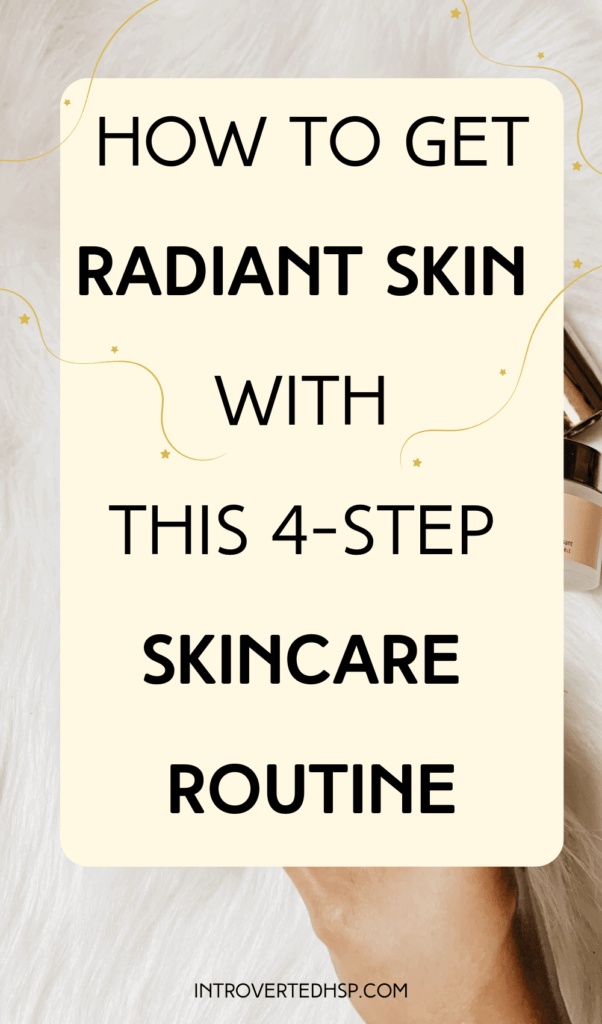
This post may contain affiliate links, which means if you make a purchase through these links, I may receive a small commission at no extra cost to you. As an Amazon Associate I earn from qualifying purchases. Please read my disclosure for more info.
Skincare basics
Learn about your skin type
Know your skin type before you buy skincare products. There are five main skin types: normal, combination, dry, sensitive, and oily skin.
You can determine this by washing your face in the morning and not doing anything else with it for 30 minutes. Then, take a look at your face and see if it shines somewhere or appears oily. You can also dab your face with some paper to see if there is oil on top of your skin.
If your face shines all over, you have oily skin, if it’s only the T-zone that shines bright, you have combination skin.
If your face doesn’t shine and looks dry with flaky patches, you have dry skin, and normal skin is the easiest one of all and somewhere in between them all. With normal skin, you won’t have serious dry patches or excess oil production.
When your face is itchy or red, you might have sensitive skin.
Always choose skincare products for your skin type if you want good results. You want to make your skin better not worse right?
Check out this article from Healthline to help you figure out your skin type and how to handle your specific skin type better.
Makeup removal
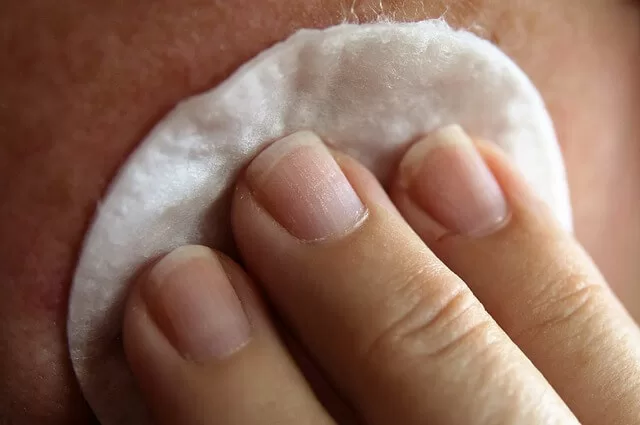
Always remove your make-up before going to sleep. Period.
Some make-up products contain SPF, but for the SPF to be effective enough during the day, you should apply a thick layer of makeup that looks awful. So don’t consider the SPF protection in makeup enough protection for your skin. Use an extra layer of sunscreen.
Makeup should be applied after all the skincare steps if you want to use it before applying your makeup.
Wash your hands before starting your skincare routine
It is very important to wash your hands before you start your skincare steps.
You will be using your hands for spreading skincare products over your face and neck so if you don’t want more acne and inflammation, wash your hands before starting the skincare steps.
When your hands are germ-free, you can start your skincare routine without the risk of the bacteria from your hands moving over to your face.
Sunscreen = the best anti-aging product

Always wear sunscreen throughout the day. Even in the winter, even on cloudy days, even when you don’t go outside at all. Every single day.
UV rays can go through windows, so you are susceptible to them whenever you have a window and need to protect your skin. There are horrible images of truck drivers with half their faces all wrinkled and the other half perfectly fine because of the UV ray damage.
You should also reapply it every 2 hours for it to stay the most effective. But just putting it on at the start of your day is a good habit to form. Add it to your skincare steps to protect yourself against aging and skin cancer!
Use at least a sunscreen with SPF 30, but go for SPF 50 if you can for more protection.
Don’t forget about your neck, decolletage, and hands!
Your neck, decolletage, and hands age just as fast if not faster than your face, so protect them from the sun as well! If you want to look as young as possible, you must put sunscreen and moisturizers on these places too every day.
The 4 basic skincare steps everyone needs
Step 1. Cleanser (or double cleanse)
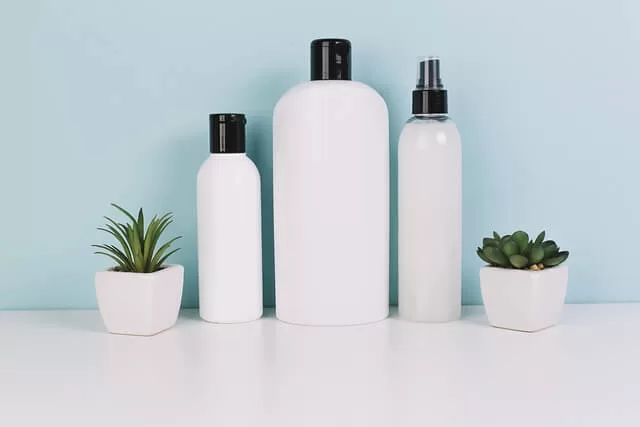
Every skincare routine starts with cleansing your face and neck. You can do this by putting some water-based cleanser on your hands and massaging it onto your face and neck. Do this for 45 seconds to a minute especially if the cleanser has any antimicrobial properties to reduce acne. It needs time to work then.
Always pick a cleanser that works well with your skin type.
In the morning, one cleanser will do the trick to make your skin clean after a night of tossing and turning and sweating in your bed.
In the evening, many dermatologists swear by double cleansing, especially if you use a lot of makeup or you are sweating a lot during the day. The first cleaning can be done with an oil-based cleanser or micellar water to remove all the makeup and dirt, and the second cleanse with a water-based cleanser like in the morning.
When you are done washing your face, gently dry it with a clean microfiber towel. Don’t rub your face but gently pat it until it’s dry. Now you have a clean base for the next skincare steps.
Great water-based cleansers to use in the morning and at night:
For normal to oily skin:
For sensitive skin:
For every skin type:
Double cleansing Korean skincare products:
- Oil-based cleanser: Anua Heartleaf Pore Control Cleansing Oil
- Water-based cleanser: ANUA Heartleaf Quercetinol Pore Deep Cleansing Foam
Micellar water instead of oil-based cleanser at night:
For your first cleanse of a double cleansing routine and to remove your makeup:
- Garnier Micellar Water For Waterproof Makeup, Hydrating Facial Cleanser & Makeup Remover
- Garnier Micellar Water for Oily Skin, Facial Cleanser & Makeup Remover, Mattifying
Step 2. Serums with active ingredients
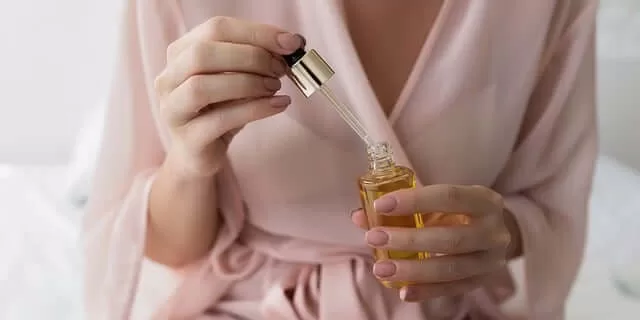
Vitamin C
When your skin is clean, it is time to add some serums with active ingredients to work their magic on it. For a simple routine, one serum per skincare routine will do. You can add serums to your routine from the age of 25 to gain benefits from them.
In the morning, adding the powerful antioxidant vitamin C to your skincare routine is a great idea. It has the potential to brighten your skin, reduce wrinkles, and boost collagen production. It could also reduce hyperpigmentation and hydrate your skin. Sounds amazing right?
Watch out for the cheapest serums because they sometimes have unstable vitamin C, and when it’s unstable, it won’t give you the amazing benefits. It’s better to spend a little more when you want positive results.
Affordable and qualitative vitamin C serum:
Retinol
Another wonderful active ingredient to add to your skincare routine at night is vitamin A derivative, also known as retinol! It is a form of retinoid that can be bought in many different strengths to work on different skin issues.
It helps smooth out fine lines and wrinkles like no other and is also used to treat acne. It’s a must-have for anti-aging and a better-looking skin.
It also is known for boosting your cell turnover which helps shed the dead skin cells faster and makes your skin appear brighter. This high turnover also makes your skin more sensitive to the sun so always wear SPF during the day and use it in your night routine for the safest use.
Retinol also has anti-inflammatory features and can boost collagen production to make your skin look younger.
The more powerful tretinoin has to be prescribed by a doctor, but there are plenty of retinol serums that you can buy over the counter which are also effective.
Retinol is a little trickier to start implementing into your skincare routine as it can give you the retinol uglies initially. This doesn’t happen to everyone, but many people experience it. You can try to prevent the main side effects of retinol by starting with a lower strength, only applying it a few times a week, and using the retinol sandwich technique.
The retinol sandwich technique is a method where you apply moisturizer on your face first, then retinol, and then again moisturizer. By putting it between two layers of moisturizer, you have less chance that your skin will be irritated by the product.
Important warning: not everyone can use retinol at all times. When you are pregnant or nursing, you should not use retinoids including retinol.
If you have skin conditions like rosacea, severe acne, very dry or sensitive skin, or eczema, it would be wise to talk about it with a dermatologist before starting it on your own.
Affordable retinol serum for beginners:
Possible extra: Hyaluronic Acid
Vitamin C and Retinol are two serums that I am definitely going to add to my skincare routine, as they are very effective antioxidants. But if you want some more delicious stuff for your skin, you can consider adding hyaluronic acid to your skincare steps as well.
Hyaluronic acid is a great element to boost the hydration of your skin and give it more plumpiness and a fresh look. It’s especially good to add to your routine if you have dry skin as it boosts hydration. This product doesn’t have to be expensive to be effective and is often also implemented in moisturizers or cleansers.
Hyaluronic Acid Serum:
Step 3. Moisturizer

Everyone needs to use a moisturizer, twice a day preferably. It doesn’t matter if you have oily skin or not, oily skin can still get dehydrated so, therefore, it needs to be moisturized as well.
It’s best to apply your moisturizer on damp, not dry skin so you can lock in hydration. When your skin is damp, the moisturizer will also be better absorbed by your skin.
Pick a moisturizer that fits your skin type if you want to improve your skin and not worsen it.
If you want to reduce the amount of skincare steps, you can choose a moisturizer with SPF, for example in the winter months when the sun is nowhere to be seen. But when the sun is shining and you are going outdoors, adding the fourth step, the extra layer of sunscreen will protect your skin best.
When you use a moisturizer with SPF in the morning, you can buy another one to use at night since you don’t need the SPF when you are sleeping.
In summer, you might want a lighter moisturizer and add the extra layer of sunscreen, while in winter, your skin might benefit from a thicker moisturizer to protect it against the cold and windy environment.
Moisturizers that get the job done:
For normal skin to dry skin:
For combination and oily skin:
For dry and sensitive skin:
For almost every skin type:
- Neutrogena Hydro Boost Water Gel Face Moisturizer with Hyaluronic Acid
- e.l.f. Holy Hydration! Face Cream
- CeraVe Ultra-Light Moisturizing Gel
Step 4. Sunscreen
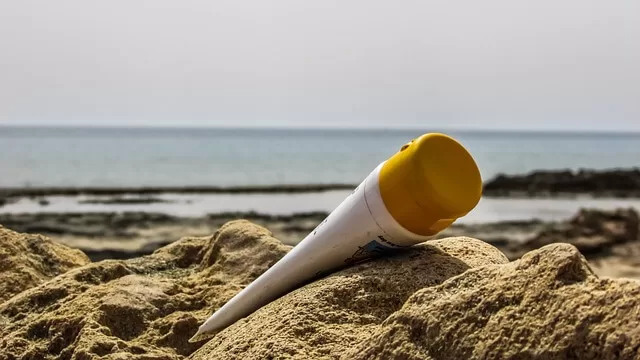
Last but not least, the holy sunscreen! Best friend of all dermatologists and healthy skin lovers.
Of all the skincare steps, this might be the most important one from a dermatologic point of view, as this step protects your skin against skin cancer! Wearing sunscreen won’t protect you 100%, but you can get to 98% which is pretty great.
The basics for wearing sunscreen is that you need to apply it generously on top of all your skincare products. Reapply it every two hours for the best protection or more if you are sweating a lot or getting wet. It’s best practice to go for the SPF 50 or even 100 to get the most protection out of it. Get yourself a sunscreen with broad-spectrum protection, that protects against UVA and UVB rays.
But most importantly, choose a sunscreen that you like wearing every day!
I used to hate sunscreen so badly. The smell, the stinging in the eyes, and the stickiness, most of the time combined with sand on the beach is just pure horror for me. But since I’m starting to get wrinkles and want to prevent skin cancer and premature aging at the same time, it’s time to change my relationship with sunscreen for good.
I discovered Korean Sunscreen! I read all these positive comments online so I wanted to try it for myself and I find the hype to be true.
So if you hate sunscreen, maybe it’s time to try a Korean brand to change your mind!
Great Non-Greasy Sunscreens:
- EltaMD UV Clear Face Sunscreen
- Neutrogena Ultra Sheer Dry-Touch Water Resistant and Non-Greasy Sunscreen Lotion with Broad Spectrum SPF 70
- Neutrogena Beach Defense Water-Resistant SPF 50+ Sunscreen Stick, Broad Spectrum UVA/UVB Protection
- Sun Bum Daily SPF 50 Sunscreen Face Gel
Awesome Korean Sunscreens:
- ROUND LAB Birch Juice Moisturizing Sunscreen (SPF50+ PA++++)
- Relief Sun Sunscreen SPF50 +++PA++++Korean Skin Care Solution for All Skin Types => the one I use currently and love
- Abib Quick Sunstick Protection Bar SPF50
Lipbalms with SPF:
Summary: Morning versus evening skincare steps
Morning skincare steps:
- Water-based cleanser
- Vitamin C serum
- Moisturizer
- Sunscreen
Evening skincare steps:
- Oil-based cleanser or micellar water (when u wear a lot of makeup or sweat a lot)
- Water-based cleanser
- Retinol
- Moisturizer
Morning and evening skincare steps can differ a little bit from one another, but you can use some of the same products for both routines.
These skincare steps are pretty basic ones and if you are still very young, you can do with only the cleanser, moisturizer, and sunscreen.
I hope you find the right products for you and get a beautiful radiant skin!
